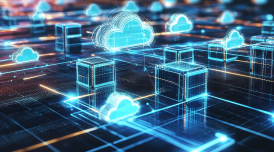
Struggling to unify your growing data sources? Tellestia’s data integration services simplify complex data ecosystems, delivering cohesive, reliable, and actionable insights. Our certified data integration consultants and experts tailor enterprise data integration solutions to your business needs – enabling informed decisions, improved operational efficiency, and scalable growth. Unlock the full potential of your enterprise data with seamless integration and ongoing support from a trusted data integration company.
Benefits of Data Integration Services
Empower your enterprise with seamless data integration solutions, enabling real-time insights, operational efficiency, and scalability.
Impact Stories
Success Stories
Our Data Integration Service Offerings
Our comprehensive data integration consulting services cover a wide range of enterprise needs:

Tellestia’s data integration consultants standardize data from diverse sources, ensuring clean datasets that power business intelligence and analytics.
Tellestia enhances your data by integrating external insights like demographics or market trends, delivering a deeper understanding of customer behaviors.
Our data integration specialists excel at integrating data across leading cloud platforms such as AWS, Google Cloud, and Microsoft Azure, ensuring your data moves seamlessly and securely across environments.
With our enterprise data integration services, we make sure your data is always up-to-date. This allows for responsive decision-making, enabling your team to work with the most current information.
Ideal for high-volume data, our batch processing services ensure efficient, periodic updates, keeping your systems in sync without compromising on performance.
We build robust API integrations, allowing for streamlined data flow from external sources and ensuring compatibility with various formats and protocols using custom data integration solutions.
Our Methodology for Seamless Data Integration
Tellestia’s data integration consulting methodology is designed to address your unique needs with precision and expertise.
01. Source Definition
Identify all relevant data sources and define efficient data extraction methods.
02. Data Extraction
Use advanced techniques to extract data from diverse sources while maintaining high performance.
03. Data Refinement
Transform raw data through cleansing, deduplication, aggregation, and validation for accuracy and relevance.
04. Quality Assurance
Ensure consistency, reliability, and accuracy with stringent validation processes.
05. Integration
Integrate refined data into your systems for unified business intelligence.
06. Ongoing Maintenance
Provide continuous support and updates, ensuring data integrity and alignment with evolving business needs.
Why Choose Tellestia for Data Integration Services?
Tellestia brings deep domain expertise and certified talent to every project, positioning us as a trusted data integration company for mid and large enterprises.
More Insights on Data Integration Solutions
Explore Our Services

Turn Your Data into a Strategic Advantage!
Partner with Tellestia to transform your enterprise with seamless data integration services, real-time insights, and scalable growth powered by custom data integration solutions.
Frequently Asked Questions
Q1: What is data integration services?
A1: Data integration services is the process of combining data from different sources into a single, unified view. It involves connecting and transforming data from multiple databases, applications, and sources to ensure consistency and accessibility across the organization. This enables more accurate insights, efficient operations, and supports data-driven decision-making.
Q2: What are examples of data integration?
A2: Common examples of data integration include:
- Customer Data Integration: Combining customer information from various sources—such as sales, support, and marketing databases—into a unified profile.
- Supply Chain Integration: Synchronizing data from different stages of the supply chain (inventory, logistics, distribution) to streamline operations and improve real-time visibility.
- Financial Data Integration: Merging data from multiple financial systems (accounting, billing, banking) to provide a consolidated view of financial health for better financial planning and reporting.
- Hybrid Cloud Integration: Integrating data from both on-premise systems and cloud platforms to create a unified data ecosystem in hybrid IT environments.
Q3: Is data integration the same as ETL?
A3: Data integration and ETL (Extract, Transform, Load) are closely related but not exactly the same. ETL is a process within data integration that involves extracting data from various sources, transforming it into the desired format, and loading it into a destination, such as a data warehouse. ETL is typically a batch process that helps prepare data for analysis. Meanwhile, data integration is a broader term that can include ETL but also encompasses real-time data integration, data virtualization, and other approaches aimed at unifying data across an organization for consistent access and use.
Q4: Why is enterprise data integration important for businesses?
A4: Enterprise data integration is essential for businesses because it ensures that data from different sources is consolidated, reliable, and easily accessible. This centralization enables better decision-making, supports operational efficiency, and provides a comprehensive view of business activities. It’s particularly critical for organizations seeking to leverage big data analytics, streamline processes, or improve customer experience through unified data insights.
Q5: What is the difference between real-time integration and batch processing?
A5: Real-time integration updates data instantly as changes occur, providing up-to-the-minute insights, which is valuable for dynamic environments requiring rapid decision-making. Batch processing, on the other hand, involves updating data in scheduled intervals (e.g., nightly updates). Batch processing is suitable for large datasets where immediate updates aren’t critical and helps manage processing load effectively.




























